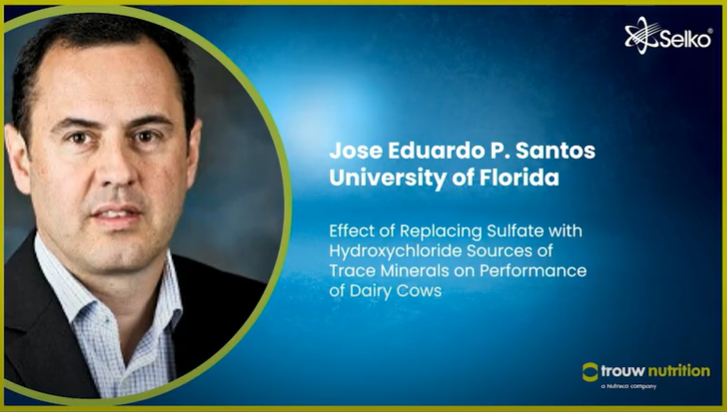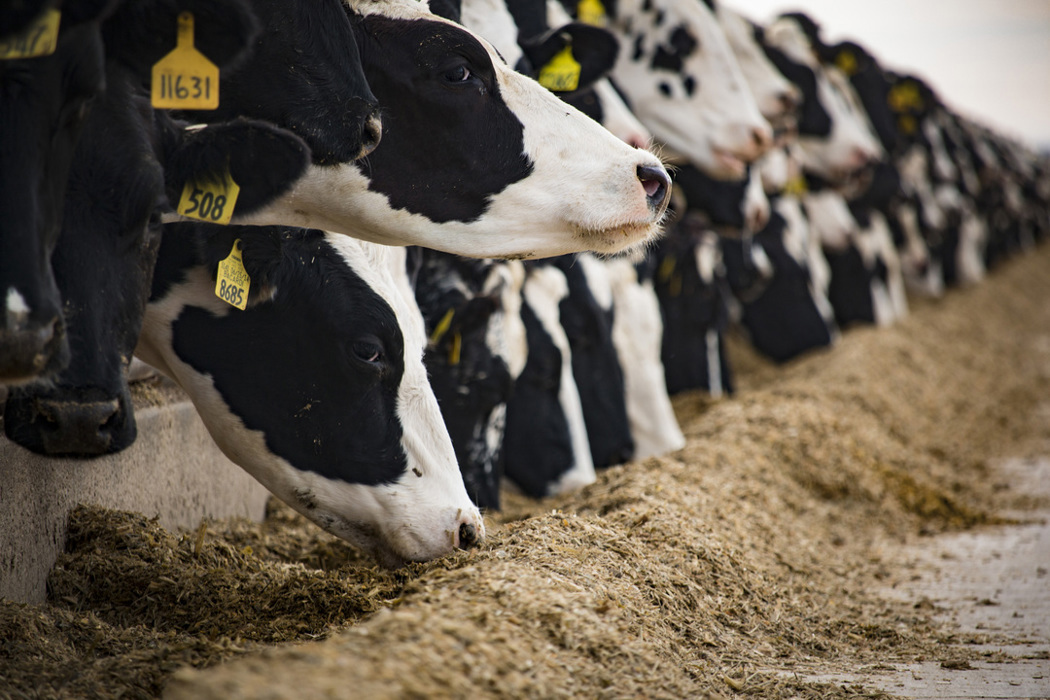
Fine-tuning trace mineral nutrition for more sustainable dairy farming
- Ruminants
DairyNutriVision 2024 Summary block 1: Mineral nutrition and metabolism
**************************************************************************************
Sustainability on a dairy farm should be looked at from different angles. The nutrition angle is an important one here. Not only which raw materials we choose, but also the trace mineral source matters.

There is a clear need to provide transparency around the environmental impact of milk production. Considerable progress has already been made across the industry. However, there is still room for increasing the transparency around the environmental impact of dairy production, applying improved practices, and better monitoring progress.
In the quest to build ‘the sustainable dairy cow’ we must consider short (direct)- and longer-term (indirect) actions. While things like prolonging longevity and reducing replacement rates have a more mid to-longer term effect, supplying dairy cattle with feeds that are more sustainable directly lowers the environmental footprint of the milk they produce. It can be as simple as changing a fat source or using certain circular ingredients. The role of trace minerals in sustainability and the differences between sources is also increasingly recognised and confirmed.
Trace minerals – zinc (Zn), manganese (Mn), Selenium (Se), copper (Cu) and iron (Fe) – have a key role in maintaining long-term productivity in dairy cows. While supplementing too little can reduce health and productivity, we must be careful not to overfeed certain trace minerals, as this can be toxic for the animal, but also lead to higher amounts of unused trace minerals in the faces and urine, hence negatively affecting the environment (e.g. soil and water quality). Feeding too little of a trace mineral can reduce health, reproduction and productivity.
Understanding regulatory homeostatic mechanisms
Trace mineral nutrition is an art and many things are affecting when and how much of a specific trace mineral should be supplied. The homeostatic process in the gut of the animal is the backbone here and mainly regulated by 2 key processes: 1), the secretion of bile, and mucosa into the gastrointestinal tract from endogenous sources via the pancreas and 2) regulated absorption of minerals from dietary and endogenous origins. When we look at Zn, Cu, and Mn, animals have evolved highly regulated homeostatic mechanisms to prevent both deficiency and toxicity. For example, when we feed more zinc, the absorption of zinc by the animal goes down and endogenous secretion goes up. However, data illustrating these regulatory mechanisms for Zn, Cu, and Mn in ruminants are scarce. In combination with attempts to mitigate any possibility of deficiency, this has resulted in (too) generous supplementation of these trace metals in modern dairy production systems.
But more insights are gained to better fine tune trace mineral nutrition and to prevent over or under supplementation. At DairyNutriVision, research by Daniel et al (2023) was shared, addressing that we should not neglect the role of voluntary dry matter intake. The study showed that dry matter intake can vary a lot from late lactation through the subsequent mid-lactation. When dry matter intake is high, combined with current Zn, Mn, and Cu supplementation practices, it can lead to exceeding regulatory homeostatic mechanisms resulting in potential body accumulation of certain trace minerals. The study also proved the resilience of the homeostatic system when faced with a temporary low dietary supply of trace metals, which should be acknowledged when making recommendations on trace metal feeding.
The work done by Daniel et al and others all help to get a better understanding how the minerals are absorbed and metabolised, the upper and lower boundaries of regulatory homeostatic mechanisms, and what the cow (in different stages) in the end really needs. The use of advanced dairy modelling is a great way to predict when the supply is either above or below the lower boundary and can calculate the impact of a supplemental feeding strategy. Over the years, these insights have led to better defined trace mineral recommendations and nutritional practices in dairy cows, leading to immediate economic and environmental benefits.
Different trace mineral sources, different outcomes
After determining the correct level of supplementation, it is also very important to consider the quality and source of the trace mineral used. This is required given that the mode of action, stability, and bioavailability can vary between the various trace mineral sources such as (oxides, sulphates, organics and hydroxy). Research has shown that the source chosen can make a big difference – especially in a vulnerable group such as transition cows. Transition cows go through a significant number of metabolic changes. Next to a drop in Ca blood serum levels, we also see a drop in vitamin E, vitamin A and zinc levels in the blood at calving and onset of lactation.
At DairyNutriVision, a recent transition cow study was presented which compared sulphates and Selko® IntelliBond® hydroxy trace minerals (Zn, Cu and Mn), fed at the same levels pre- and post-partum. The study showed that Selko® IntelliBond® improved colostrum yield and increased energy corrected milk (ECM) in the first 15 weeks of lactation, without affecting dry matter intake (DMI) post-partum. Cows that received hydroxy trace minerals also performed better in terms of disease incidence, which led to lower culling rates and better fertility (more cows pregnant at 305 days in milk DIM)), compared to the cows that received sulphate-based trace minerals.

Using Selko® IntelliBond® hydroxy trace minerals (Zn, Cu and Mn) also influence methane emissions, one of the most important parameters in dairy sustainability. This study presented at DairyNutriVision showed that hydroxy trace minerals improved in vitro fermentation parameters of apparent Organic Matter Disappearance (aOMD) and Apparent Microbial Biomass Production (aMBP; proxy for milk production) compared to other trace mineral sources. This improvement in rumen fermentation in the hydroxy trace mineral group led to a decreased release of methane per unit of aOMD. Earlier, an independent verification of an LCA evaluating the ability of Selko® IntelliBond® to reduce the cow’s carbon footprint showed that it can reduce the cow’s carbon footprint by up to 2%, compared to sulphate-based trace minerals.
Conclusion
For successful dairy production, it is important to ensure the right nutrients and/or additives are present at the right time to support optimised productivity, health and well-being, cost-effectiveness and environmental sustainability. Supplementation with a quality source of trace minerals is required to keep dairy cows healthy and productive. An increasing amount of research is now available to allow us to choose the most effective source while fine-tuning recommendations and feeding
strategies.
Selko and Trouw Nutrition are at the forefront in dairy cow nutrition, providing cutting edge research and application of its highly effective hydroxy trace minerals. At DairyNutriVision, some of these recent insights were shared with a global audience, leading to better understanding of trace mineral nutrition and the use of trace minerals, a crucial part in our quest to building the sustainable dairy cow of the future.